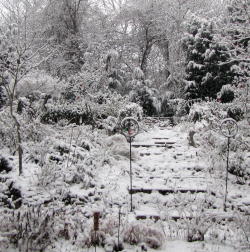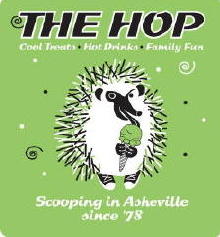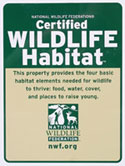
Nobody loves me, everybody hates me, I think I’ll go eat worms*…

Well, not everybody hates me. Me being Cirsium vulgare, (I think), bull thistle, spear thistle, or definitely some kind of thistle. While doing research for this post, the only references that came up were how to get rid of it, how awful it was and what a scourge on the earth was this handsome plant. Poor thing.

The thistle may only be a humble weed, but it is the emblem of the Scottish nation. The prickly-leaved, pink or purple-flowered ‘Scotch’ thistle is, along with tartan, perhaps the most identifiable symbol of all things Scottish.

The legend has it that a sleeping party of Scots warriors were saved from ambush by an invading Norse army when one of the attackers trod on a thistle with his bare feet. His cries raised the alarm, the roused Scots duly defeated the invaders, and the thistle was adopted as the symbol of Scotland. Unfortunately, there is no historical evidence for this, but Scots, like other nations, love a good story.

There is also some confusion as to which species of thistle can claim the title of the national symbol. The spear thistle, stemless thistle, cotton thistle, Our Lady’s thistle, musk thistle and melancholy thistle, have all been suggested as possible candidates. Studying the text and photos of the various thistles left us a little cross-eyed, but it hardly matters which one is growing here in the Fairegarden. The pollinators love it. Each morning when I go visit the garden before the sun comes up, there are bees on nearly every flower, sleeping. The architecture of the thistle reminds us of an insect flop house, with rooms for all weary buzzers.

Thistle will colonize bare disturbed ground. It grows well on heavily grazed land as it is unpalatable to most grazing animals. We have seen it growing tall and free along the roadsides in my area, the purple tufts rising up, until the mowing crews come along. The flowers are a rich nectar source used by numerous pollinating insects, including Honey bees, Wool-carder bees, and many butterflies. The seeds are eaten by Goldfinches, among others. The seeds are dispersed by wind, mud, water, and possibly also by ants; they do not show significant long-term dormancy, most germinating soon after dispersal and only a few lasting up to four years in the soil seed bank. Seed is also often spread by human activity such as hay bales. We allow one plant to grow to maturity each year, carefully deadheading every day to prevent it from overtaking the garden. After the final flower has bloomed, the plant will be pulled up and thrown on the brush pile, san seeds.

Bull thistle is native to Europe, western Asia, and northern Africa. It is thought to have been introduced to the eastern United States during colonial times and the western United States in the late 1800s.

It is currently found in all 50 states.
*Nobody Love Me
Nobody loves me,
Everybody hates me,
I think I’ll go and eat worms.
Long thin skinny ones,
Short fat juicy ones,
See them squiggle and squirm.
Bite their heads off,
Suck the juice out,
Throw the skins away.
Nobody knows
How well I thrive
On worms three times a day.
Long thin skinny ones
Slip down easily,
Short fat juicy ones stick.
Nobody loves me,
Everybody hates me,
I think I’m going to be SICK!!
I remember this silly poem from childhood, possible from Girl Scouts. It seems to fit the position of the thistle in garden society, except maybe the eating worms bit, unless you are a bird. But we love the birds, bees and butterflies and we love the thistle, too.
*** And they can dance!***
From the immortal Disney artists, the creative masterpiece Fantasia.
Frances









Yes thistles are a much maligned flower, but as you say they do provide a wonderful habitat for the pollinators and are a great food souce for many birds etc. On My vegetable plot I always allow one or two to flower so as to attract the bees etc. Love the photos they are really stunning
The only time I admire thistle is when it is out in the country and I see goldfinches pulling the fluffy seedheads for their nests or eating. When the bees and butterflies are nectaring on it. It is beautiful but… they are invasive and prickly. UGH…
We have thistle growing up by the street…..and all along the road in other lots. I love the big purple bloom and as you showed, so do all the bees and butterflies. We used to sing that Worm song…usually when feeling sorry for ourselves.
Love the Scot tale of the thistle, true or not. Haven’t watched Fantasia since the kids were little….may have to dig it out and watch again.
The kind of thistle I have is perennial and stoloniferous. Pulling it up at the end of one year is too late, no matter how carefully deadheaded. By then it has sent a taproot deep into the ground, and it will take several years of pulling to deplete it. Meanwhile, it is sending roots sideways. I agree that it has wonderful structure and a happy plant is truly majestic, but I am with Lisa, I only admire the plants growing somewhere else, not in my garden.
Ha! Thistle as a Bumble flophouse. Priceless!
Geez, I have it in my nature gardens also and the bugs and butterflies adore it. tT is kind of like a milkweed flowers too! Or, maybe it is! I have been known to get it from roadsides as I knew they would love it and I love PurPle! Smiles, Cyndi
I love how you’ve showcased the thistle here and shown what a benefit it is to so many creatures. I’ve always loved the shade of the center of a thistle flower. It looks like it stepped out of a crayon box. I think thistles and artichokes are in the same family and I enjoy letting them flower too so the creatures can enjoy them.
That first picture is so beautiful. I have always loved thistles growing along the roads. So pretty when the gold finches are on them. Balisha
So beautiful and cruel to touch before they turn to gossamer and then become a deadly invading force. Not far short of a chemical warfare tactic.
I wrote one of those ‘scourge of the earth’ posts some time ago about Cirsium vulgare. I tried to get rid of it here, as it was taking over some large areas of the orchard. The trouble is, when you see a zillion bees with their faces smashed down into the blossoms, it’s difficult to hate this plant. Now I leave a patch of them just for the bees, as little else blooms here this time of year. That’s my excuse anyway 😉
Pingback: 2013 Fairegarden Calendar « Fairegarden